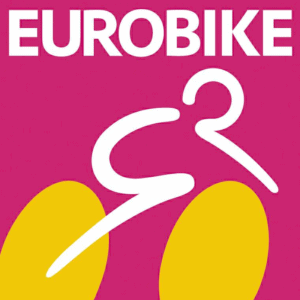Differentiation is the sure sign of a maturing market or product category, and it’s clearly happening in the e-MTB segment. There are also some interesting new mountain bikes without electric assistance to be discovered at Taipei Cycle Show, from brilliant all-round performers to fully-fledged racing steeds.
Within the mountain biking community, there’s a long-standing joke that for every inch of extra travel some smart marketers come up with an entirely new category. You have heard of downcountry bikes as an example. The e-mountainbike segment is seeing a similar trend, fueled by the rise of the new light-support category. From short-travel models with a compact e-drive system, less support and a smaller battery to long-travel rigs with large batteries that render mechanized shuttle services in bike parks obsolete, electrified mountain bikes have become almost as diverse in concept and intended use as their conventional siblings.
Merida [hall 1 / M0620], Taiwan’s second-largest bicycle manufacturer, exemplifies this trend. Its e-One-Sixty and e-One-Forty models, powered by Shimano’s Steps motors, are offered in various frame options and travel configurations, catering to a range of preferences and price points. After a first generation with external batteries, the second generation launched in May 2019 made some serious steps in terms of integration.
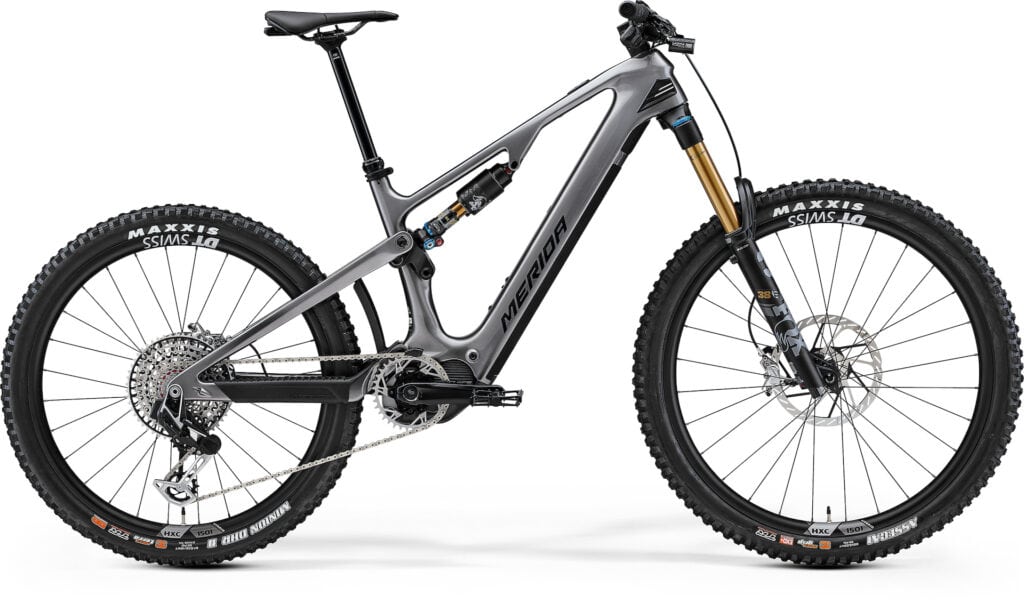
At the Taipei Cycle Show, Merida is debuting the third generation of the eOne-Sixty and the eOne-Forty bikes. For the longer-travel platform you get to choose between lightweight CF models with a carbon fibre frame or more affordable Lite models with an alloy frame while the eOne-Forty is offered as Lite alloy models only. Thus these e-mountainbikes cover quite a range in terms of travel on offer, intended use and pricing.
As for the geometry, both the reach and the chain stays have been extended for more stability at high speeds and traction on steep climbs, the seat angle has become steeper and the head tube angle slacker. Both the kinematics and the progression are size-specific, and flip chips mounted between the swingarm and the rocker link allow for reverse-mullet builds without ruining the bike’s geometry.
To find the right fit, Merida relies on the reach more than on seat tube length and adds an own-branded dropper post with plenty of travel. Merida has opted to put a non-removable 600 Wh battery in the downtube of the eOne-Sixty CF while the alloy versions get a removable 750 Wh unit. If that is still not enough a range extender adds another 360 Wh for long days out on the trails.
However, not every e-MTB rider seeks peak performance. With its YT-MT 0184 model Yota Cycles [hall 1 / N0417] has built an e-mountainbike that blends contemporary elements with lots of comfort. The main tube of this alloy deep-instep frame houses a Darfon battery with a generous capacity of 708 Wh designed to work with Shimano’s Steps EP600 motor.
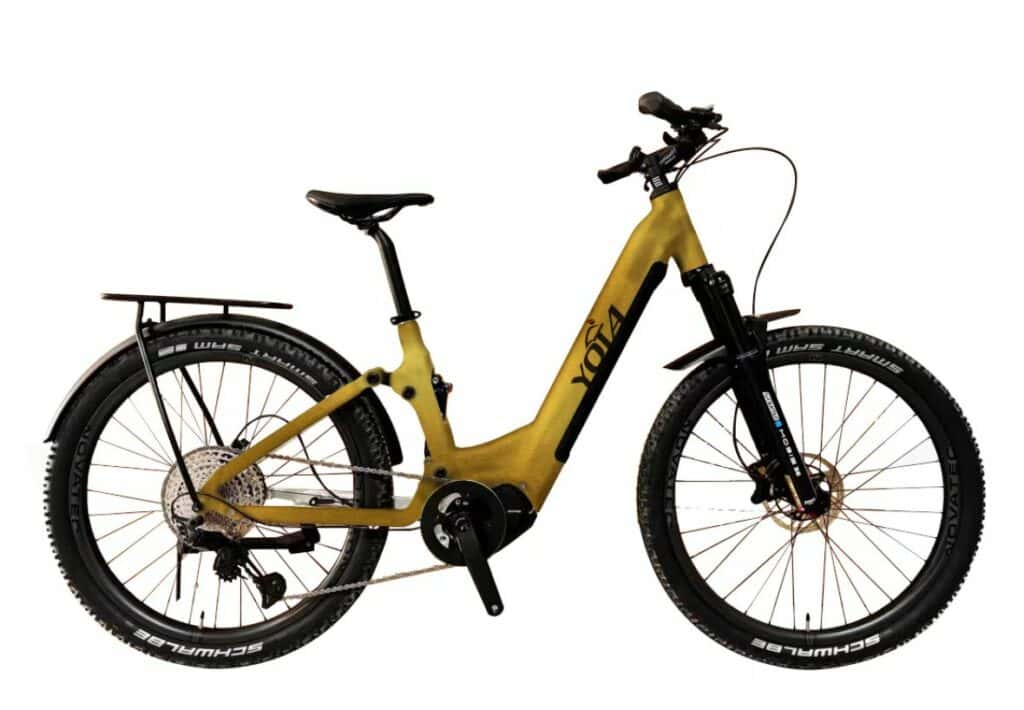
Thanks to 2.35 inch-wide Schwalbe tires and the rear suspension with its well-hidden shock and 120 mm of travel, this model is built to transmit the additional power to the ground safely while adding to both comfort and confidence when riding unpaved routes.
While e-mountainbikes have grown their market share substantially in recent years, there still is a market for mountain bikes without electric assistance. As the Paris Olympics approach, manufacturers have come up with new crosscountry race bikes to supply sponsored athletes with state-of-the-art equipment. While Pinarello [at Sunstar Taiwan Enterprises, hall 1 / M0808] is one of the most iconic brands in road cycling, the Italians are relative newcomers in the world of mountainbiking. Thanks to a sponsoring partnership with the Ineos Grenadiers worldtour team, they now have Olympic crosscountry champion Tom Pidcock riding Pinarello bikes, both on- and off-road.
In close cooperation with Pidcock and Pauline Ferrand-Prevôt, Pinarello has designed the Dogma XC platform. Made of carbon and offered as a hardtail or a full-suspension model, both versions share characteristic features such as the unique design of the bottom bracket area that is said to optimize stiffness. While the hardtail frame features wildly asymmetrical seat stays, the full-suspension Dogma XC relies on a rear triangle with flex stays rather than pivots at the dropouts.
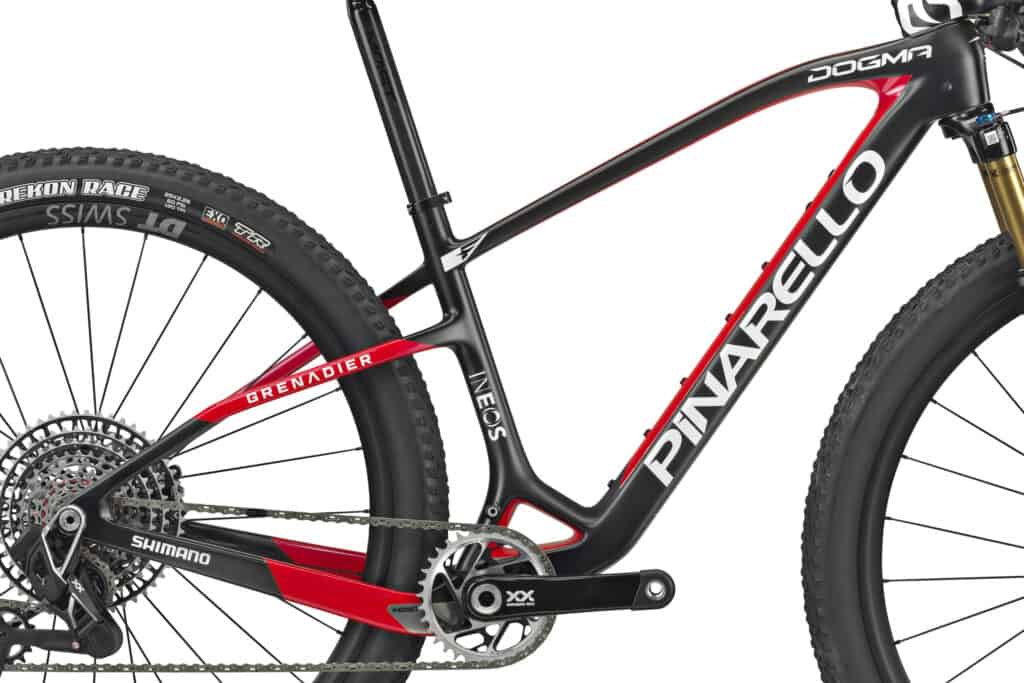
This rear triangle is made of two halves held together by the two-piece main pivot axle that resembles Campagnolo’s bottom bracket axle construction and the rocker arm of the rear suspension. Its rear travel can be adjusted to stand at either 90 mm or 120 mm by changing the position of the shock mount on the top tube and thus the shock length.
Most mountain bikes sold all over the world will never be ridden in races of any kind. And for all those who do not plan to compete, an all-round full-suspension model is the best choice as it offers plenty of traction and efficiency on the climbs, isolates those tiring vibrations from the rider and adds to the fun and confidence and descents. The new One-Twenty from Merida is a typical example: With 120 mm of travel in the back, a dropper post and its progressive geometry, this bike performs amazingly well in rough terrain while still being efficient enough for those really long climbs in the mountains.
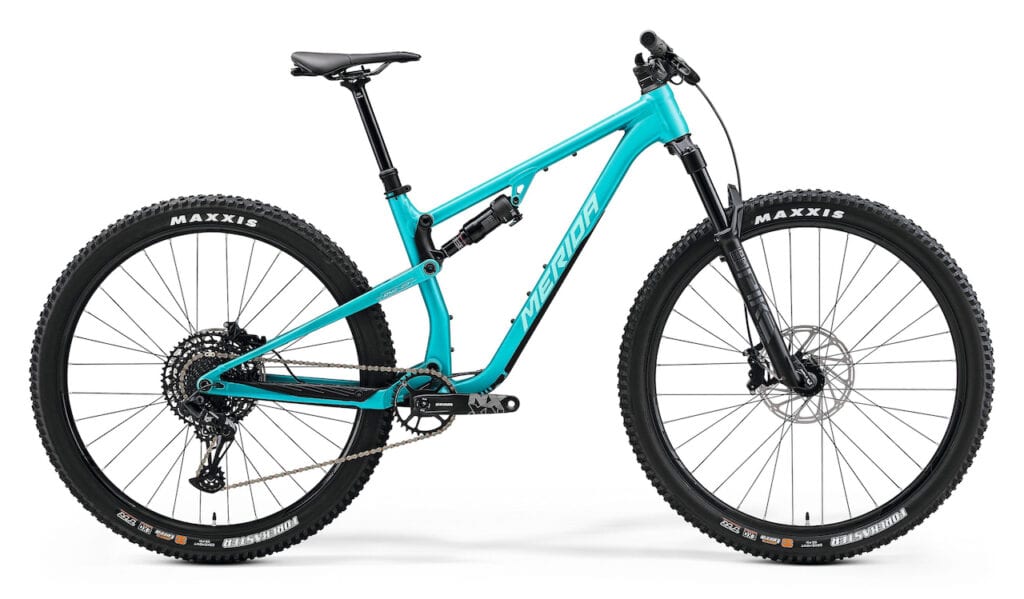
Since it rolls on 29-inch wheels, the new OneTwenty is a proper mile-eater as well, with its moderate geometry allowing for long days in the saddle.

